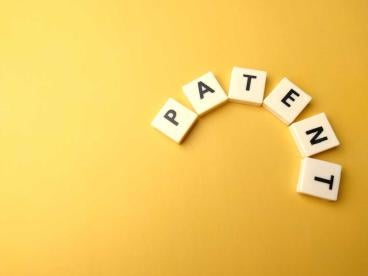On April 18, 2023, the United States Patent and Trademark Office (“USPTO”) updated the patent grant system to an electronic patent grant (“eGrant”) system. Previously, the USPTO issued patent grants to patent applicants via mail. In the mail system, applicants would typically receive their grant about two to four weeks after paying the issue fee for the patent. Soon, applicants will only have about a week from payment of the issue fee to file a continuing application.
Under the eGrant system, patents now issue electronically through the USPTO’s electronic patent application filing and management system (“Patent Center”). The eGrant system was put into place to reduce paper waste, permit issued patents to be viewable and printable by applicants and the public immediately upon issuance, and expediate the grant process.
Once an applicant receives a notice of allowance, the applicant has three months to pay an issue fee.1 After the issue fee is paid, the applicant receives an issue notification indicating to the applicant when the patent will issue. Under the mail grant system, the issue notification was sent about two to three weeks before the patent issued.2
This timeline is of great importance to applicants who wish to file continuing applications (e.g., continuation, divisional, and continuation-in-part applications) based on their allowed patents. A continuing application must be filed before the patent the continuing application claims benefit to is issued.3
With the new eGrant system, the time period between paying the issue fee and the patent issuing will shorten, thereby reducing the amount of time an applicant has to file a continuing application. Under the eGrant system, the USPTO plans to post an issue notification to Patent Center on the Wednesday or Thursday following the payment of the issue fee, and the patent will be issued the following Tuesday.4 Therefore, the period between payment of the issue fee and the grant of the patent will shorten from about two to four weeks down to the Tuesday following the posting of an issue notification.5
Given the short period of time between the issue notification and the issue of the patent, it is possible that applicants and their attorneys who receive issue notifications by mail may not receive the issue notification until after the patent has issued. To ensure prompt receipt of the issue notification, the USPTO recommends that applicants and their attorneys sign up for the e-Office action program.6 The e-Office action program provides electronic notices of all communications from the USPTO to the applicant and their attorneys.7
Statistics have not yet been gathered on the extent of the shortened period of time. Applicants whose patents were issued on April 25, 2023, mostly received issue notifications on April 5, 2023, which is in line with previous time periods under the mail grant system. However, applicants will not want to rely on these statistics.
In the federal register release for the new eGrant system, the USPTO stated “issue notifications will be electronically available via Patent Center after the payment of the issue fee, usually on the Wednesday or Thursday before the patent issues.”8 In a conversation with the USPTO representative for the eGrant system, the representative stated patents will continue to issue two to three weeks after the issue notification has been posted for the first few months of the eGrant system.9 After these first few months, the USPTO plans to begin issuing patents the Tuesday following the posting of the issue notification to Patent Center.10 Once the eGrant system is fully operational, patents will likely issue five to six days after the issue notification has been posted on Patent Center.
Applicants, along with their attorneys and docket teams, will want to keep in mind the shortened time for filing a continuing application. If a continuing application is not timely filed, the applicant will lose the opportunity to file a continuing application and may be blocked from patenting further iterations of their invention due to the issued patent becoming prior art. The best practice for applicants and their attorneys will be to file continuing applications before or concurrently with the payment of the issue fee.
[1] Manual of Patent Examining Procedure §1306.
[2] Manual of Patent Examining Procedure §1309.
[3] Manual of Patent Examining Procedure §201.07; 35 U.S.C. §120.
[4] Fed. Reg. Vol. 88 No. 39, p. 12560-12565.
[5] Id.
[6] Id.
[8] Id.
[9] Phone Conversation with Matthew Sked, USPTO Patent Administrator.
[10] Id.





 i
i


